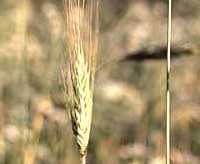|
|
|
|
| Lamiaceae |
|---|

| |
Mentha arvensis
Wild Mint:
Flowers occur in dense, axillary clusters.
This is the only native species of Mentha found in the US;
v. japonica grown for menthol.
M. piperita Peppermint, M. spicata Spearmint.
|
|
| Lamiaceae |
|---|

| |
Nepeta cataria
Catnip:
Leaves are darker green on the upper surface and light green or whitish underneath.
Terminal and axillary flowers; lower lip on flowers.
|
|
| Urticaceae (Nettle) |
|---|

| |
Urtica dioica
Stinging Nettle:
Tiny greenish flowers are in slender, branched, interrupted spikes from the upper leaf axils.
Stinging hair on stem; stipules; rugose leaves.
|
|
|
|
| Caryophyllaceae (Pink) |
|---|

| |
Lychnis alba
White Campion
(Evening Campion):
Dioecious, fragrant flowers open at dusk and close in the morning.
5 white-to-pinkish petals deeply notched; 5 protruding styles; inflated calyx has prominent veins.
|
|
| Balsaminaceae |
|---|

| |
Impatiens capensis
Orange Jewelweed (Spotted Touch-me-not):
Moist soil.
Dew or rain beads up on the leaves forming sparkling droplets which give rise to the common name of jewelweed.
Watch for ruby-throated hummingbirds as they come for nectar.
|
|
|








